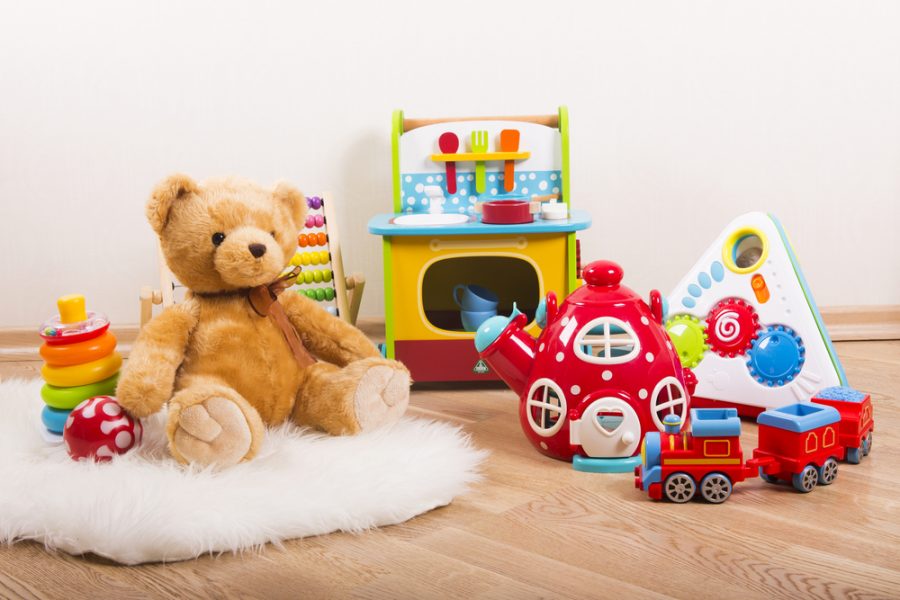How to Trademark the Name of a Toy

Bringing a new toy product to market requires a great deal of development and research – not to mention quite a bit of creativity. You’re identifying a need in the market, deciding what kind of toy you’d like to produce, designing it for manufacture, and either licensing it or overseeing production yourself. One key component not to overlook: naming the toy. How else will word spread about the must-have new item?
Once you decide on a name for your toy, you’re able to trademark it – ensuring that no one else can sell a similar product – or any other toy – with a similar name. It’s especially important to protect your product’s name in the toy industry – it’s full of knock-offs and counterfeit goods, and when you’re dealing with a children’s product, the correct name is that much easier to get “lost in translation.”
For a toy, just like any other product, a trademark covers only the identifying factors like name and logo – not the product or design itself (for those areas, you’ll need to look into patents and/or copyrights). The protections afforded by a trademark are critical in preventing confusion amount other products, though. Let’s take a look at how you can trademark the name and/or logo of a toy.
Choosing a strong trademark for the name of your toy.
The United States Patent & Trademark Office is more likely to approve certain types of trademarks over others, based on certain categories that the mark might fall into. The highest likelihood of approval is for a “fanciful” or completely made up trademark – basically, a nonsense word or a new combination of two completely unrelated words. For a new kind of children’s toy, you’ve got a lot of possibilities here. Unrelated or “suggestive” terms work nearly as well – that is, words or phrases that don’t describe your toy, or have anything to do with its appearance or function. You’ll want to avoid descriptive or “generic” terms – they’re so widely used and indistinct that the USPTO can’t grant them as a trademark to any one entity. Remember, the purpose of a trademark is to prevent confusion between other products, so the more creative, the better.
Conducting a proper trademark search for the name of your toy.
In addition to choosing a proper trademark that has a high likelihood of USPTO approval, you’ll also need to make sure that your mark is not already in use by another toy manufacturer – company or individual. As you probably know from your market research, the toy market is huge – which means lots of good names are already taken. Unfortunately, a simple search engine query will rarely, if ever, turn up all possible potential trademark conflicts for the name you’ve chosen – there are too many variables. Keep in mind that the USPTO will turn down marks that are too similar in terms of spelling, sound, variations in punctuation and spacing in a name – all in the name of preventing confusion in the market (don’t worry, this protects you too, once your mark is approved). Rather than attempting to tackle the entirety of the toy market to ensure that your mark has a good chance of approval, it’s a good idea to contact a trademark attorney. They’ll have tools available that are more in line with the way USPTO examining attorneys will review your application, and can assist you in determining a name that may give you a higher likelihood of approval.
If you choose to design a logo for your toy – always a good idea for a children’s product – your search process will be even more difficult, as you’ll have to sift through the USPTO public database based on verbal descriptions of your logo design elements. A trademark attorney is more familiar with how to search efficiently.
The trademark application process for the name of a toy.
Once you’re satisfied with the name you’ve settled on, it’s time to submit your actual trademark application. For something with packaging like a toy, you’ll need to ensure the trademark is used on the packaging itself. This is necessary in order to meet the “use in commerce” requirement for your trademark application. This is another area in which a trademark attorney can assist you in submitting all necessary materials and examples to show every manner in which your mark will be used. Once your application has been submitted, the USPTO examining attorney will review your name and the usages of your mark, and if it all checks out, you’ll have a registered trademark. Once you receive the trademark registration certificate from the USPTO you’re free to use the small circled “R” symbol which serves as notice to other manufacturers that your mark is registered, and you can police and request legal action to stop the sale of any toys with similar names.
Do you need assistance with a trademark matter?
Contact an Attorney Today